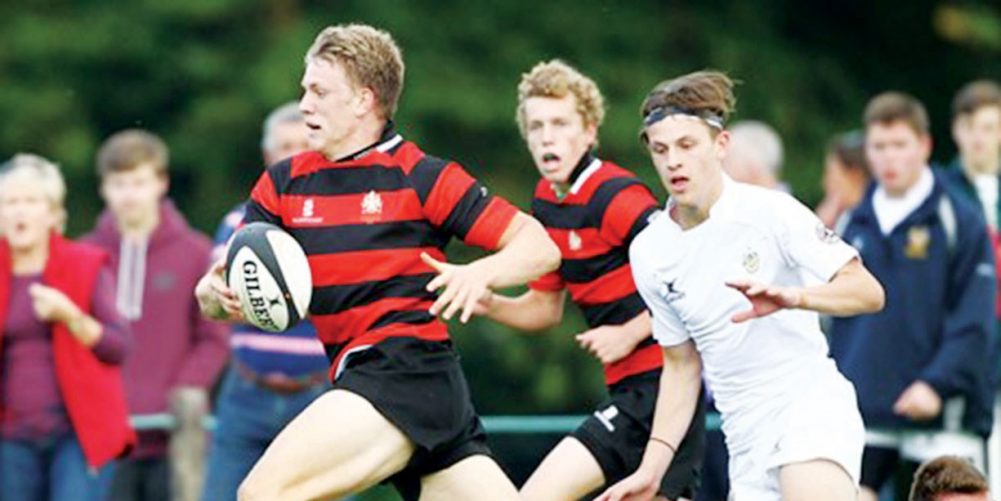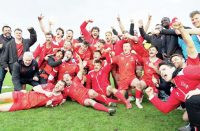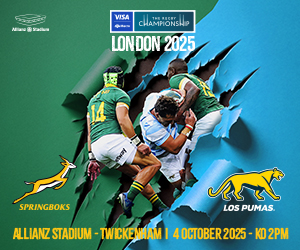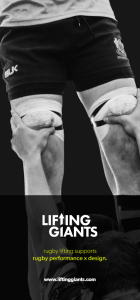Brendan Gallagher continues his series looking at rugby’s great schools

THE rugby world has much to thank Cheltenham College for. They have bequeathed us the likes of Charles Dick, Danny Hearn, Bob Lloyd, Nick Abendanon and, most recently, Ollie Thorley – but surely their greatest contribution of all, back in the dawn of rugby history, is their insistence that the scoring of a try be recognised as a means of accumulating points in itself.
At Cheltenham the crossing of the try line and touching down was never considered merely the means by which you earned the right to “try for goal”. We are forever grateful chaps, rugby could have become bloody boring otherwise.
Cheltenham were one of the very first schools in the country to adopt the Rugby version of football with the Acton brothers arriving hotfoot from School House at Rugby School in 1844 with a written set of the Rugby laws. A centenary plaque was unveiled at the school in 1844 to mark the historic event.
From the outset, however, Cheltenham added their own twist calculating the score of the match by the number of ‘rouges’ a side scored and under their version a try counted for one rouge and a goal – the successful kick after the scoring of a try – earned three rouges. For a long while they were on their own in this radical thought that tries were an entity in their own right and should count.
Most of their early games were internal or occasionally against a college or club side when an agreement had to be negotiated before the game as to the scoring system but gradually it was the Cheltenham version that held sway. This was enshrined in law in 1886 when the RFU, who had been tinkering with the laws, playing numbers and scoring systems since being formed in 1871, voted to adopt the Cheltenham system for the forthcoming season. The exact minute read: “A match shall be decided by a majority of points, a goal shall equal three points, and a try one point. If the number of points be equal, or no goal kicked or try obtained, the match shall be drawn. Where a goal is kicked from a try the goal only is scored.”
Rugby was finally up and running in a form that we would vaguely recognise today and Cheltenham were to the fore with the first inter-school games against Wellington College in 1892 and Rugby school in 1896.


Unsurprisingly they spawned a number of early notables. Randolph Aston was a centre who played for England in 1890 and toured South Africa with what we now call the Lions in 1891. Aston – 6ft 3in and 15 stone – was an early Jonah Lomu among the backs. He played in all 20 games on tour, including the three Tests and scored 30 of the 89 tries they touched down in South Africa.
Another Cheltonian on that tour was Robert Thompson, an Ulsterman, who also played in all three Tests, having left Cambridge University that summer.
Thompson, though, never got capped by Ireland Reports of the good life to be had in South Africa obviously filtered back to Aston’s younger brother Ferdie, also a Cheltenham pupil, who promptly emigrated and captained the 1896 Boks against the Lions.
On the subject of South Africa mention should also be made of another Cheltonian, Albert Elliott, who became a medic and volunteered to serve as a Field doctor during the second Boer War. After serving at Ladysmith he died of a fever at Middleburg in 1900.
The 1911 team was a particularly noted team who pulled off a record win over Rugby while in later years Scotland centre Charles Dick was probably the biggest name to emerge from the school and is still their most capped player with 14 international appearances. Dick bowed out on the highest of notes, scoring one of Scotland’s five tries in their Triple Crown win over England at Twickenham in 1938.
Danny Hearn started life as a scrawny scrum-half at Cheltenham and couldn’t initially make the U16 side but a growth spurt one summer, when he also took up boxing, and a switch to centre saw his game come to life and he starred for the unbeaten Cheltenham team of 1957-58.
The other unbeaten teams in Cheltenham history incidentally are 1939, 1987 and 2017. Hearn headed off to University life in Dublin and Oxford and had won England caps before his career ending and life changing injury playing for the Midlands against the All Blacks in 1967.
Bob Lloyd was a high class centre – not many midfielders get to score two tries against the All Blacks in a Test match – but disappeared off the scene when he accepted a job in Hong Kong where he lived for 30 years.
Cheltenham has a proud record for producing distinctive backs. Simon Danielli – a Scotland wing despite his English upbringing and Italian name – first came to prominence when he joined the England schools tour of Australia in 1997 direct from a Cheltenham first XI cricket tour of Barbados while the polo-playing Tom Beim and richly talented – and much overlooked by England –Abendanon was a major attacking force at schools level. And now we have Thorley.
Former England and Gloucester full-back Olly Morgan is the current master in charge and has enjoyed some notable successes, including a particularly impressive unbeaten season in 2017 when the side, hitting the ground running after a pre-season tour to Japan where they trained daily in 30c heat, won all 15 fixtures.
They won all 11 games in their Daily Mail Merit table campaign but such are the mysteries of the weighting system in that competition they finished only fifth which seemed pretty harsh. Cheltenham did, however, get voted the Crabbies Schools team of the season.
This was a team with an impressive all-round skill set and it recorded many notable victories, not least against an excellent Blundell’s side (18-7), Sherborne (39-17), Monmouth (20-12) and old adversaries Rugby (31-7).
There were a number of outstanding players in that group who are now forging professional careers. Tom Stanton was a stand out in the backs and signed for Gloucester. No.8 Cameron Terry is another to attract the attention of Gloucester –where Morgan helps coach the Academy – and they were joined last season by two outstanding prospects who had played a year young in that 2017 side.
Jack Clement, who arrived at the school with a reputation as an outstanding cricketer, quickly made his mark as a powerhouse No.8. He captained the side in 2018 and won two England U20 caps last year and Gloucester have high hopes for him in the back row. Charles Tchen, a speed machine on the wing, also joined them at Kingsholm on an Academy contract.
“I am immensely proud,” says Morgan. “Yet more pupils achieving professional contracts demonstrates the strength of our program and also the longstanding link with Gloucester. It highlights their commitment and work ethic to achieve a goal in such a short period of time. It is fantastic to have these pupils join Tom Stanton, Cameron Terry, Will Goodrick-Clarke at London Irish and Ollie Thorley as current professionals.”


























